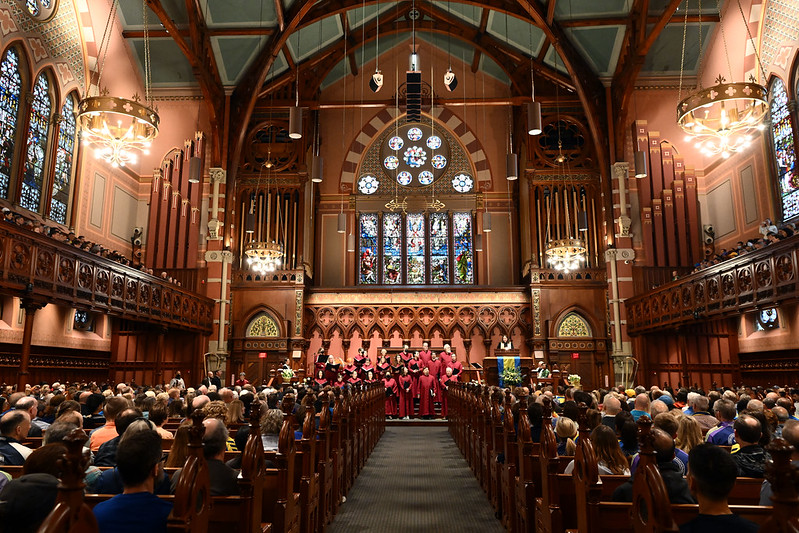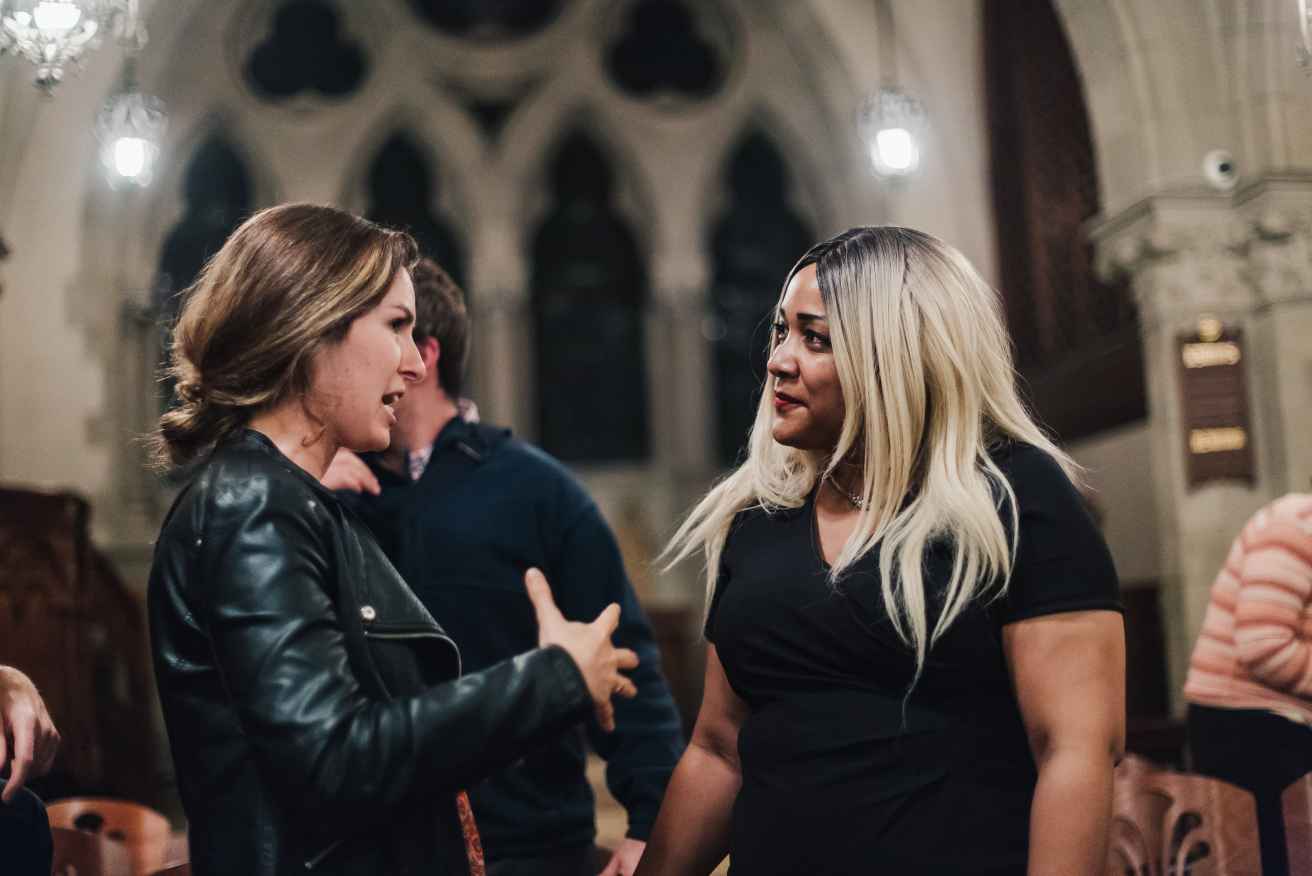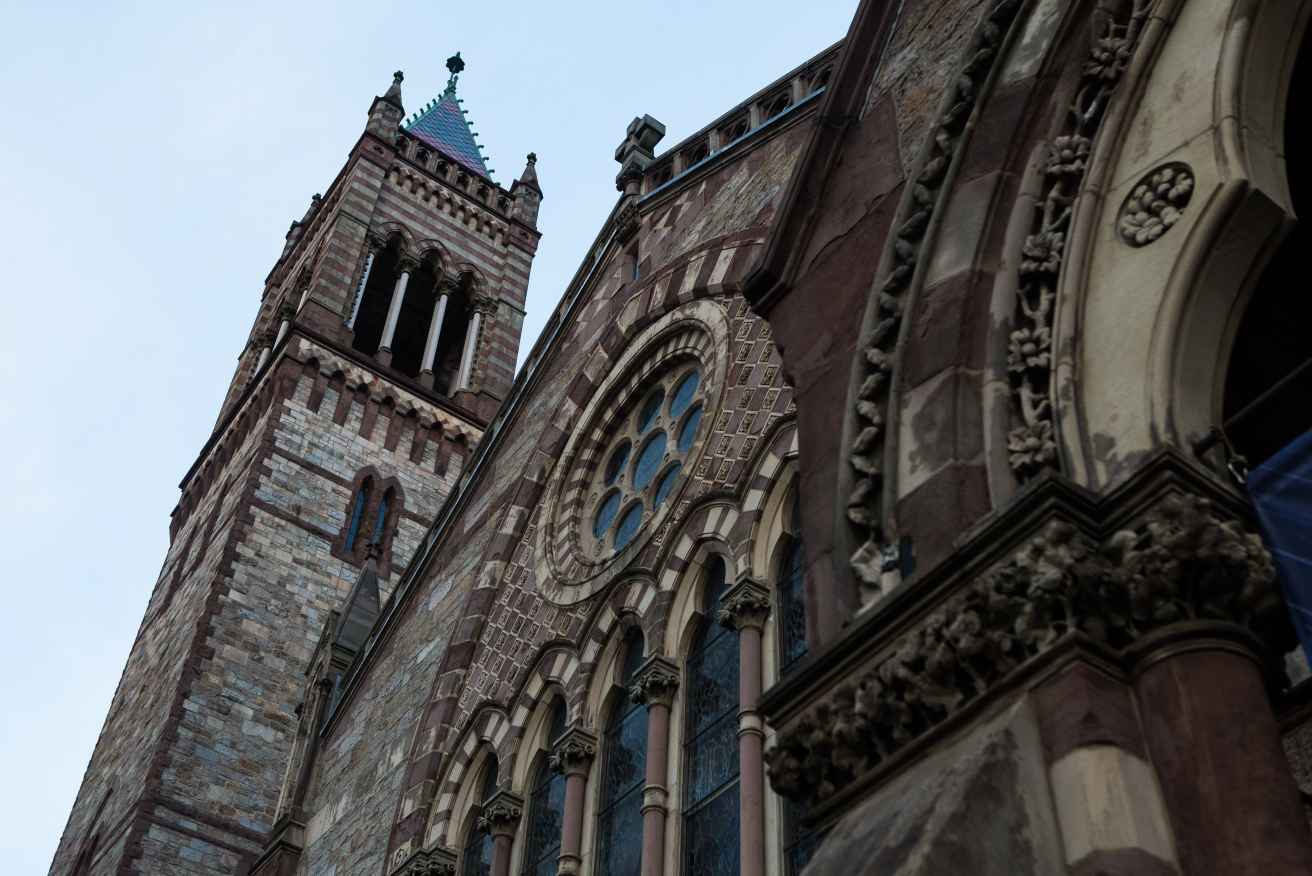Meeting House Sunday
Meeting House Sunday
Coin of the Realm
Transcript
God is good! (All the time) Happy Thanksgiving!
Speaking of Thanksgiving, I recently got to wondering about a curious phrase in the English language. The phrase, “Let’s talk turkey.” Wherever did that come from?
Here’s one explanation: Back when, an English settler and a Wampanoag Indian went hunting for birds. Together, they caught a number of turkeys and buzzards. When the pilgrim "divided the game, he took for himself the two turkeys, leaving four buzzards for his companion."
Annoyed, the Wampanoag responded, "Stop talking buzzards. Let's talk turkey!"
Let’s talk turkey about money. In the 1600’s in Massachusetts, in Boston, money was a muddle.
There were lots of different kinds of money, but not enough of it. Much local trade was conducted by barter … a coat might be exchanged for a bear skin; a barrel of molasses for a pile of pine boards. Musket-bullets were used instead of farthings.
The Indians had devised an economic system called wampum. For them, clam-shells were the coin of their realm. Having entered their realm, the English learned to use wampum.
As to coinage, there were in circulation coins from England, Holland, Spain, Mexico and Portugal. Problematically, each country had a different system and different standards of weight and fineness. To make matters worse, lots of the coins were counterfeit … composed of as much alloy as their bootlegging makers thought they could get away with. So, not only were coins scarce, they were unreliable and they were confusing.
Money was a muddle.
They needed more money. They needed some means of standardizing the coinage in circulation. And, they needed to find a way to reduce the occurrence of counterfeit coins. But how? The British Crown owned the privilege of making money.
Then, an opportunity arose.
In 1649 King Charles I was beheaded. England was declared a Commonwealth, and Oliver Cromwell stepped in as the Lord Protector. This was New England’s moment. Carpe diem! In the absence of royal authority, the New England puritans quickly asserted themselves.
The General Court of Massachusetts hustled and by 1652 had authorized “a mint for coining shillings, sixpences and three-pences.” This would be the first mint in the colonies and, in effect the only mint that ever operated.
They hired for this work, a young man the age of 28. His name: John Hull.
Hull had been born in England. With his Puritan parents, he came to Massachusetts when he was eleven years old. For the first seven or so years he farmed with his father. At about age 18 he apprenticed as a silversmith.

So, he had been silversmithing for a full decade by the time the General Court turned to him, making him the first Mint Master.
John Hull lived on an estate with his parents, just a block from here … now the infamous site of the defunct Filene’s Basement.
Having contracted with their new Mint Master, the General Court of Massachusetts then commissioned a building to house the mint. This was conveniently built on the Hull’s estate, so John had no commute at all. The Minting House was a simple wooden edifice sixteen feet square and ten feet high. In addition, the General Court supplied young Mr. Hull with the necessary equipment and tools.
Nathaniel Hawthorne takes up the story in this way: “Hereupon all the old silver in the colony was handed over to … John Hull. The battered silver cans and tankards … and silver buckles, and broken spoons, and silver buttons of worn-out coats, and silver hilts of swords that had figured at court ...” (Hawthorne), and silver candlesticks and jewelry.
In addition, the Mint also took both counterfeit and regulation weight coins, Spanish and otherwise. In other words, anything containing silver was accepted. John Hull received the items, assayed them, threw them into the pot and melted them down.
From this curious assortment of silver, John Hull struck a new, local, standard coinage: a coin of this realm, the Pine Tree Shilling.
On one side are stamped Massachusetts and the image of a pine tree. On the other side: New England, the year 1652, and Roman numerals, denoting the value. Roman numeral twelve (as pictured on the insert), denotes twelve-pence, or one shilling.

At first, the mint operated with impunity. However, with the restoration of Charles II in 1660 the situation got dicey. Shortly after his ascendancy to the throne, Charles II notified the colonists, (of what they surely knew already) that the production of silver coinage was a royal prerogative. The colony, demanded Charles II, was to cease and desist the minting of coins.
John Hull found himself operating a business considered seditious and treasonous.
The colonists responded to the king’s cease and desist order. But not as you might imagine. They did not close the mint. They neither ceased nor desisted! Instead, they sent to his Royal Majesty Charles II gifts (bribes). The colonists commissioned and sent to the King for his royal Navy, large masts cut from huge trees from the forests of Maine … trees, the likes of which could not be found in all of merry old England.
In addition, they loaded the King’s ships until they were heavy with codfish, barrels of cranberries and a special Indian porridge made from corn.
Moreover, while the Pine Tree Shilling was minted for 30 years, all the coins John Hull struck were dated 1652. Why? The colonists were careful to maintain the illusion that all the coins that were in circulation had been struck during the confusion in England (between the beheading of Charles the I and the restoration of Charles II) … giving the appearance that they had never defied the Crown—but had simply taken advantage of a brief period during which the Crown had been de-throned.
The King never issued Massachusetts a royal minting privilege. Neither did he do the drastic deed of closing the mint. Instead, tall, stout masts from Maine handsomely bore the royal Navy’s sails. Cranberries, fish and porridge from New England were lustily consumed at the royal table. The bribes worked.
But, why, you ask, other than the novelty of the story, would we concern ourselves with John Hull? What has he to do with us?
Excellent question. I am getting there.
By agreement with the General Court, young Mr. Hull, Mint Master, pocketed one shilling for every twenty he struck. The Mint was successful beyond the wildest dreams of the General Court. Over time young Mr. Hull became old Mr. Hull and as he did so, he grew to become among the richest men in the colony.
One of the principle merchants of his time, John Hull came to own two vessels (and he had an interest in another 14). His sailing vessels were constantly engaged in commercial voyages to and from the West Indies, England and France. In addition, Hull owned huge tracks of farmland outside the city. He kept a herd of wild horses in the wilderness of Cape Cod.
The Hull estate, located a block from here, included an herbal kitchen garden, flower gardens, plots of vegetables and orchards of peer and apples trees. There were also stables, a coach house, small abodes for the tenant farmer and some of the families’ servants. Not least, there was the Mint: the building that housed the colonial treasury.
John Hull’s Mansion was of timber framed in oak. It had a central chimney and thatched roof. Inside the home was furnished with oak and mahogany furniture imported from England, fabrics from England the Far East, silver vases, beakers, platters, and even silver chamber pots. One on side the windows afforded open views of the Harbor.
The ground floor contained two large halls and an enormous kitchen with a long hearth. The second floor had numerous bedchambers and closets. The Mansion and its grounds were large enough and productive enough to accommodate the Hull and Sewell households, servants and frequent houseguests.
John Hull served as Selectman and Treasurer for the town of Boston, and as Treasurer of the Colony. He was Treasurer-at-War during King Phillip’s War. Indeed, he personally helped finance the war from his ever growing treasure of Pine Tree shillings.
It was as an established, very wealthy merchant that John Hull became one of the founding members of this church. With all those shillings to back him up, when John Hull spoke, people listened. When John Hull was among the leaders, the schismatics, who defected from First Church in an argument over baptism, others followed.
John Hull was the first elected Elder of our church. John Hull was one of a handful of “subscribers” who each gave £100 toward the building of our first meeting house … erected here on this very spot in 1670.
In addition, while doing business in England, Hull was commissioned by the other founders to procure for them a “worthy” minister for the new congregation. (Nothing seems to have come of this, as the eminently worthy Reverend Thatcher was found right here in Massachusetts.)
Hull was just 59 when he died. He is buried in the Granary Burial Ground, in the Hull-Sewell Tomb, between the tombs of Paul Revere and Benjamin Franklin’s parent.
John Hull is in so many ways a grand ancestor. It is very probable that this congregation would not exist without him … without his pluck, but also without his wealth and his prestige.
Let’s talk turkey. Our colonial forebears had mixed relationships with American Indians whose homeland they invaded. The colonial legacy is contested and complex. It is easy to view the introduction of a Mint, of a coin, as a plucky, ingenious solution to a very real problem. It was! At the same time, the Mint had the effect of usurping what had been the coin of this realm: wampum. Against the local production of silver coinage, the Indians didn’t stand a chance.
When we enter this hallowed hall, this ancestral home, we find ourselves in the company of our forebears … all of them: the colonial Mint master and his servants; the pilgrim and the Wampanoag; the victors and the vanquished.
Our ancestors, like ourselves, were a muddled lot … a strange mixture of good and bad, desperation and ingenuity, pluck and pretense.
And money, then as now, is a two-sided, maybe even two-faced thing. Money can be either buzzard or turkey …it can be either filthy and nasty or eminently agreeable.
Jesus talked turkey about money. He insisted on what we so often deny: money is an undisputable dynamic in an intimate and intricate web of relationships with each other and with God.
As St. Luke tells it: “Jesus, perceiving their craftiness and said to them, “Show me a denarius. Whose head and whose title does it bear?” They said, “The emperor’s.” He said to them, “Then give to the emperor the things that are the emperor’s, and to God the things that are God’s.”
Amen.
SOURCES
Grandfather’s Chair, by Nathaniel Hawthorne (Part I, Chapter 6)
Salem Witch Judge: The Life and Repentance of Samuel Sewall, by Eve LaPlante
Judge Sewall’s Apology: the Salem Witch Trials and the Making of an American Conscience, by Richard Francis
History of Old South Church in Boston: 1669-1884 (in two volumes), by Hamilton A. Hill
John Hull Time-Line
1624 Born, Lancastershire, England
1635 Came to Boston at age 11
1639 Beginning at age 15 began training as a Goldsmith/Silversmith. Hull is the maker of the earliest surviving piece of New England silver, a beaker of c. 1650.
1647 At age 23 married Judith Quincy (Gov. John Winthrop presided)
1647 Owned the covenant with the First Church of Boston … was an active and distinguished member.
1648 Chosen Corporal under Major Gibbons in the Artillery Company
1652 Chosen Sargeant
At age 28, elected by the General Court as Mint Master in direct defiance of the English Crown (was entitled to keep 1 shilling for every 20 shillings coined at the Mint
1654 Chosen Ensign …
1675-6 Treasurer-of-War during King Philip’s War
1669 Was a leader among the “schismatics” who left First Church and founded (gathered or coalesced, in his words) The Third Church in Boston. Was among the leaders who gave £100 toward the building of our first meeting house. elected Elder of the Third Church (South Church, Old South)
1676 Hull’s daughter, Hannah, marries Samuel Sewell. Hulls provides an enormous dowry of £500.
1681 John Hull makes a gift of £100 to Harvard College (President Quincy later described him as one of the first great benefactors, after John Harvard)
1683 Died. Is buried in Hull’s Tomb (upwards of 40 Hull-Quincy-Sewell family members were buried in this Tomb over two centuries. It is located in the Granary Burial Ground, between the tomb’s of Paul Revere and Benjamin Franklin’s parents)
1840 Posthumously remembered in Nathaniel Hawthorne’s “Grandfather’s Chair” (Part 1, chapter 6)







